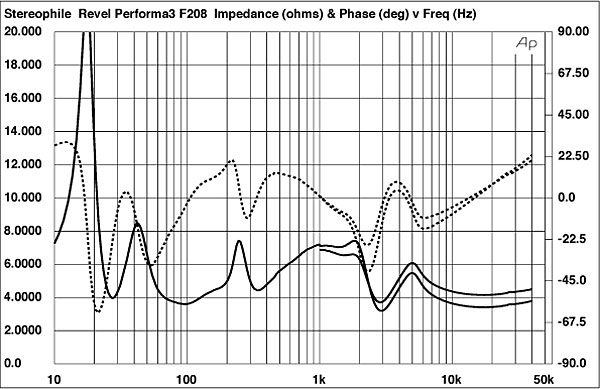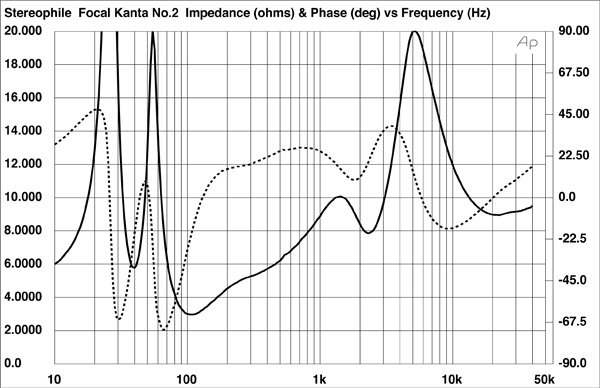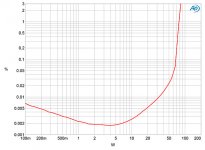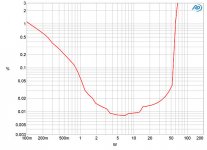The input selection is just plain old relays and the volume control is the Maxim DS-1882. This part was also used in the previous generation of integrated amps and has been revealed before in the press.
A nice part for $2.50 those IC designers do a fine job and can do things that would be difficult to do outside a chunk of silicon.
A nice part for $2.50 those IC designers do a fine job and can do things that would be difficult to do outside a chunk of silicon.
The input selection is just plain old relays and the volume control is the Maxim DS-1882. This part was also used in the previous generation of integrated amps and has been revealed before in the press.
A nice part for $2.50 those IC designers do a fine job and can do things that would be difficult to do outside a chunk of silicon.
Awesome.
Thanks Wayne.
Pass Labs INT-25 integrated amplifier Measurements | Stereophile.com
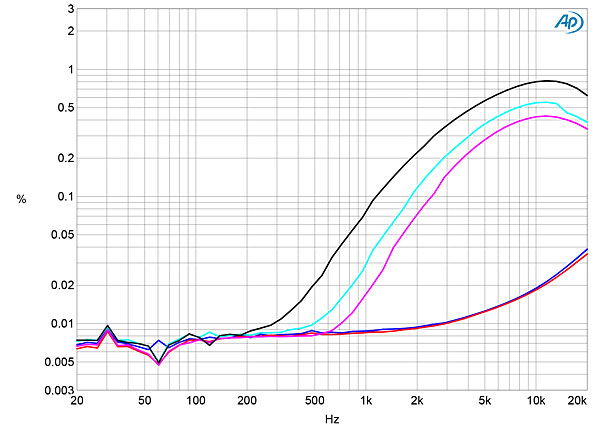

Fig.6 Pass Labs INT-25, THD+N (%) vs frequency at 8.95V into: 8 ohms (left channel blue, right channel red), 4 ohms (left cyan, right magenta), and 2 ohms (gray).
There is much to admire in the Pass Labs INT-25's measured performance. However, its intolerance in the treble for loads of 4 ohms and below means it will work best with loudspeakers whose impedance doesn't drop below 8 ohms at high frequencies.—John Atkinson
In actual operation with music and not HF sine waves it just isn't a problem. Who puts 40 Watts at 10K into a speaker. Well maybe some people do.😀
In actual operation with music and not HF sine waves it just isn't a problem. Who puts 40 Watts at 10K into a speaker. Well maybe some people do.😀
KEF LS50
An externally hosted image should be here but it was not working when we last tested it.
81 / 6 = 13.5 watts
81 / 5.5 = 14.7 watts
Let's step back for a minute - it goes from 'none that can be detected by living creatures' to 'bats beware'?
He could have just said it goes to 0.8% instead of saying it 'rises dramatically' ... like Godzilla rising out of the ocean ....
Yes, I am biased as well.
Happily so
He could have just said it goes to 0.8% instead of saying it 'rises dramatically' ... like Godzilla rising out of the ocean ....
Yes, I am biased as well.

Happily so

Pass Laboratories INT-60 integrated amplifier Measurements | Stereophile.com
John Atkinson's own words on the INT-60
Note that with the limited amount of negative feedback used, the distortion rises in the upper octaves—although, as high-level content above 10kHz is very rare in music, this decreasing linearity shouldn't affect sound quality.
John Atkinson's own words on the INT-60
Note that with the limited amount of negative feedback used, the distortion rises in the upper octaves—although, as high-level content above 10kHz is very rare in music, this decreasing linearity shouldn't affect sound quality.
Pass Laboratories INT-60 integrated amplifier Measurements | Stereophile.com
John Atkinson's own words on the INT-60
Note that with the limited amount of negative feedback used, the distortion rises in the upper octaves—although, as high-level content above 10kHz is very rare in music, this decreasing linearity shouldn't affect sound quality.
Also consider the fact that a 5th order harmonic of 10kHz is 50kHz.
I know with my ears I am not going to hear it.
In addition to that most tweeters aren’t even capable of 50kHz.
Last edited:
Speaker impedance is indeed all over the map, choose the proper amp for your speaker and music taste.
In actual operation with music and not HF sine waves it just isn't a problem. Who puts 40 Watts at 10K into a speaker. Well maybe some people do.😀
Only dumb bastards.
Being a dumb bastard myself (not that dumb though), I am expert in recognising this quality.
Hahahahahaha
take it just for pictures

though , it serves purpose - Pa and Wayne and rest of Funny Bunch are having more greenies for good wine
🙂

though , it serves purpose - Pa and Wayne and rest of Funny Bunch are having more greenies for good wine
🙂
- Home
- Amplifiers
- Pass Labs
- Pass Labs Int-25 review in Stereophile


